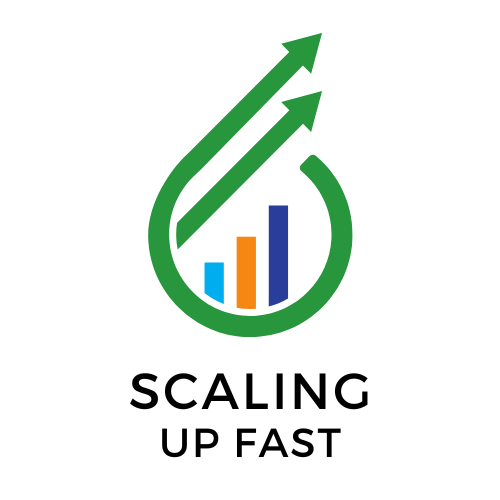Managing collections manually drains time and risks errors. Automation software transforms this by prioritizing high-risk accounts, sending timely reminders, and predicting payments using AI. This approach streamlines workflows, improves cash flow visibility, and strengthens customer interactions—helping businesses collect faster with less effort and smarter decision-making.
Leading Solutions for Automating Financial Collection Processes
Immediately after the emergence of robust debt collection software, CashOnTime stands out as a central player for streamlining receivables management. This page explains it in detail: CashOnTime. Businesses seeking to reduce manual intervention and optimize cash flow can leverage platforms like Esker, Versapay, Upflow, and CashOnTime, all renowned for their automation of critical collection process software features.
Have you seen this : Streamline your collections with top automation tools
Esker enhances efficiency with AI-driven payment predictions, customizable workflows, and real-time dashboards for tracking Days Sales Outstanding (DSO) and collection effectiveness. The platform enables tailored collection strategies and automates routine work such as reminders and account statements, allowing teams to focus on high-priority accounts. Versapay delivers a unified AR automation solution that integrates seamlessly with major ERP systems, automating tasks from electronic invoicing to straight-through cash application with AI/machine learning, which reduces manual entry and payment delays.
Upflow emphasizes collaborative cloud-based collection systems, offering automated email reminders and team-accessible dashboards. Integration with ERP, CRM, and accounting platforms ensures up-to-date risk insights. The inclusion of features like online payment portals, automated dispute handling, and workflow customization illustrates how digital debt collection solutions accelerate cash flow and reduce overdue receivables.
Also to read : Unlocking the Future: Transformative Advantages of Blockchain Technology for UK Agricultural Cooperatives
Selecting among these leading software solutions enables finance teams to achieve more consistent results, minimize debtor risk, and improve overall collection efficiency without sacrificing control or security.
Essential Automation Features and Customization for Collections
AI-powered payment predictions, call lists, and automated reminders
Modern collection process software features now center around AI in collections management to maximize efficiency. Machine learning in payment predictions identifies accounts that are slow to pay, enabling teams to automate payment reminders and automated dunning letters for both high- and low-risk clients. Predictive analytics for debt collection supports users in prioritizing outreach, streamlining debt collection efforts and improving debtor engagement metrics through targeted, data-driven messaging. By partnering automation with robust reporting and analytics in collections, businesses reduce manual collection tasks and accelerate cash flow.
Customization in collection strategies and workflow management
Customization is at the core of automate receivables management. Organizations can customize collection workflows by defining triggers for automated follow-up processes or dispute management workflows. Automation tools allow companies to build collections strategies using debtor segmentation automation and collection task prioritization, with adjustable timing for reminders and escalations. This granular approach ensures collection software scalability, so that users can tailor strategies to unique customer profiles while ensuring compliance in automated collections.
User interface design and accessibility for finance and business teams
An intuitive collection software user interface makes all the difference. Accessible software supports mobile access to collection tools and presents real-time metrics on collection KPIs. Teams benefit from cloud-based collection systems that improve cash flow with automation, supporting collaboration features for collections team members and enhancing workflow automation for collections across departments. Automation delivers robust support for both finance and business teams, transforming the overall collections process.
Integration, Analytics, and Collaboration Tools in Collection Platforms
Seamless integration with ERP, CRM, and accounting software ensures that debt collection software can instantly sync financial, customer, and sales data across systems like Salesforce, NetSuite, and Xero. Integration with accounting software and integration with CRM systems eliminates double data entry, strengthening data reliability. This enables accounts receivable automation tools to automate receivables management, auto-schedule collection calls, and streamline debt collection by using up-to-date records for every overdue account.
Real-time dashboards, analytics, and forecasting empower teams to reduce manual collection tasks and improve collection efficiency. Reporting and analytics in collections are delivered through customizable dashboards, providing transparency on metrics such as DSO and payment trends. Automation of debtor segmentation enables risk-based workflows, while AI in collections management supports debt recovery automation with payment predictions, helping prioritize communications for high-risk accounts.
Team collaboration, customer portals, and communication tools enhance collection process software features. Collaboration features for collections team members facilitate note-sharing, automated follow-up processes, and workflow automation for collections both internally and with customers. Secure self-service payment portals empower customers to make payments and access account documentation, while multi-channel communication tools and automate payment reminders reduce collection cycles and bad debt write-offs. Collect customer feedback to fine-tune strategies and maintain agility.
Security, Compliance, Scalability, and Industry Results
Data protection, enterprise-grade security, and compliance features
Secure debt collection platforms rely on robust encryption, user access controls, and strict audit trails to safeguard sensitive financial data. Compliance in automated collections is maintained through GDPR adherence, customizable workflow automation for collections, and automated documentation that tracks each step. These compliance mechanisms both reduce human error in collections and ensure collection process optimization—mitigating regulatory and reputational risks.
Scalable solutions for SMEs to enterprises, and rapid implementation
Collection software scalability supports organizations ranging from software for small business collections to large scale debt collection tools. Cloud-based collection systems and modular apps permit quick setup and easy integration with accounting software. Businesses can automate payment reminders, customize collection workflows, and implement digital debt collection solutions to flexibly address varying collection volumes. SME teams improve collection efficiency without the overhead, while enterprises benefit from automated follow-up processes and predictive analytics for debt collection.
Case studies and user testimonials on efficiency, cash flow improvement, and reduction in bad debts
Industry outcomes show these platforms help reduce manual collection tasks and improve cash flow with automation. Case studies report a decrease in Days Sales Outstanding and a notable reduction in bad debt write-offs. Intelligent debtor segmentation automation, automated aging reports, and collaboration features for collections teams also contribute to optimization. This translates into faster invoice-to-cash cycles and measurable gains in financial control and efficiency.
How Automation Transforms Receivables Management
Debt collection software powered by AI is rapidly reshaping the collections landscape. Using the SQuAD approach, the main outcome is that automated receivables management sharply reduces manual collection tasks, streamlines communication, and improves collection efficiency—with AI in collections management delivering predictive analytics for faster and smarter decision-making.
Advanced accounts receivable automation tools consistently automate payment reminders, flag overdue accounts, and customize collection workflows. For example, users can set up automated follow-up processes such as reminders, dunning letters, or notifications for payment delays. These automation steps free teams to focus on risky accounts and complex disputes, rather than chasing every overdue payment manually.
AI in collections management enhances workflows by analyzing customer payment histories, prioritizing collection calls, and predicting potential defaults. This level of automation ensures targeted engagement, reduced bad debt write-offs, and a shorter collection cycle.
Highly configurable collection process software features allow integration with CRM and accounting platforms. Integration enables unified dashboards, improved reporting and analytics in collections, and seamless updates between sales and finance teams.
Cloud-based collection systems contribute to scalability, secure access, and collaborative management. Automation in debt collection software doesn’t just improve cash flow—it also offers better customer service, compliance management, and robust data security without vastly increasing complexity for users.











